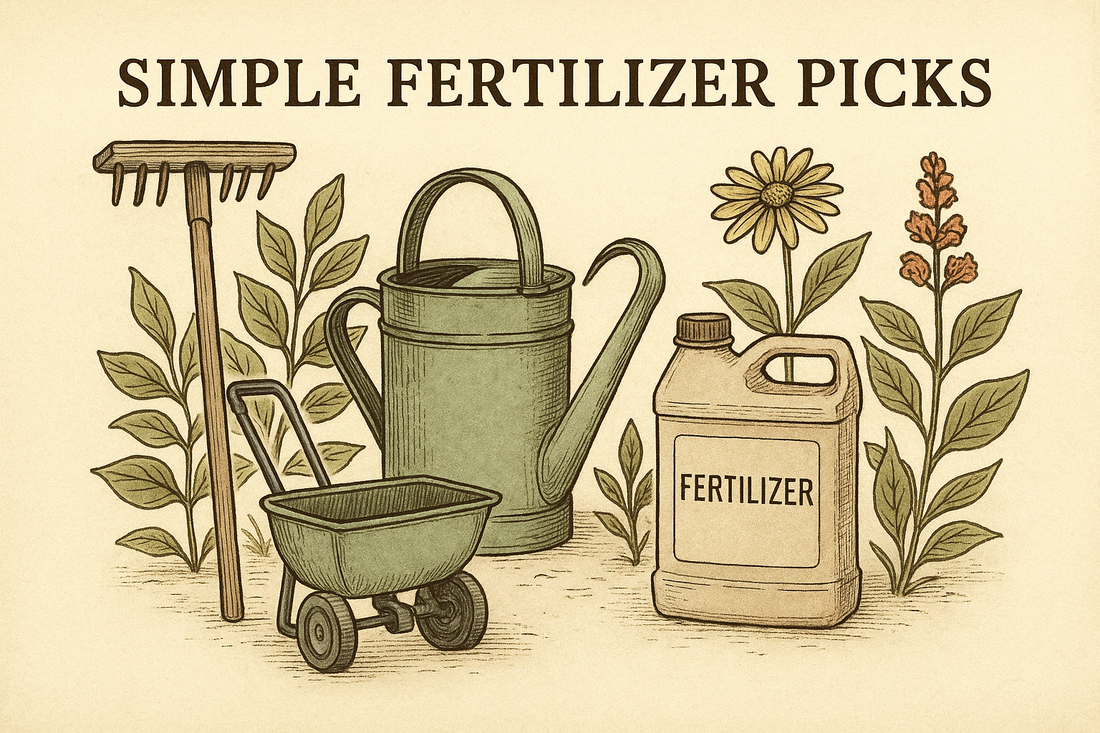
Choosing the Right Fertilizer Doesn’t Need to Feel Like Chemistry Class
The problem with “all-purpose plus bloom booster” routines
Garden centers often promote a shelf of numbered bags: one for seedlings, another for midsummer, a third for blooms. Stack them together and you risk salt buildup, nutrient lockouts, or tip burn on tender shoots. The better approach is to keep the program lean and supply each crop with exactly what it burns the fastest.
Pairing guide — pick the set that matches your garden
Each set covers both macro and micronutrient demand without forcing the heavy phosphorus loads found in many granular blends.
Why GardenIQ keeps the “P” at zero
Phosphorus plays a role in root formation, yet the vast majority of potting mixes and garden soils already contain enough from compost, manures, or previous granular feeds. Adding more often creates problems:
- Phosphate ions tie up iron and zinc.
- Runoff clouds streams and encourages algae blooms.
- Excess P can push calcium out of solution, causing blossom end rot.
Because GardenIQ liquids use the Nutrx™ carrier, nitrogen and potassium move efficiently, leaving phosphorus in the bank where plants can still access what they need.
Mixing instructions that remove the guesswork
-
Dilution rate
- RhizoCarbon — ½ tablespoon per quart of water
- High Yield — 2 tablespoons per gallon
- Dark Venom — 3 ounces per 1 000 sq ft turf area
-
Sequence
Soil drench first to supply macros, foliar spray seven to ten days later for rapid micro correction. -
Flush cycle
Once a month water plain until one quarter of the pot volume drains. This clears unused salts, resets pH, and avoids tip burn.
Quick myth check
“Bloom boosters with high middle numbers are essential once flowers form.”
Research dating back to the 1990s shows tomatoes, peppers, and many ornamentals reach peak fruit weight at soil phosphorus levels already present in average garden beds. Extra phosphate adds cost, not blooms.
When to break the schedule
- Heavy rain above two inches in 24 hours: bring the next feeding forward by five days to replace leached potassium and micros.
- Heat wave above 95 °F: skip nitrogen for one cycle to avoid soft growth, continue potassium and micros to help leaves regulate moisture.
One sheet for the potting bench
- Houseplants every 3 weeks — RhizoCarbon then Doonbeg
- Veggies every 10 days — High Yield then Octane Boost
- Lawn cycle 14 days — Dark Venom then All Purpose
Keep the card next to your watering can, mark off each pass, and watch how quickly a trimmed list of liquids outperforms the crowded shelf of “specialty” feeds.
| Growing focus | Product combination | When to use it |
|---|---|---|
| Houseplants that spend every month in a pot | RhizoCarbon 2-0-5 + Doonbeg 3-0-2 | Alternate every three weeks to keep micro-life active and roots expanding |
| Fruiting vegetables and berries | High Yield 2-0-4 + Octane Boost 4-0-2 | High Yield at first bloom, Octane Boost ten days later; repeat until harvest |
| Cool-season turf or perennial beds | Dark Venom 3-0-5 + iron + All Purpose 7-0-2 | Dark Venom for quick green-up, All Purpose two weeks later for density and root repair |
Each set covers both macro and micronutrient demand without forcing the heavy phosphorus loads found in many granular blends.
Why GardenIQ keeps the “P” at zero
Phosphorus plays a role in root formation, yet the vast majority of potting mixes and garden soils already contain enough from compost, manures, or previous granular feeds. Adding more often creates problems:
- Phosphate ions tie up iron and zinc.
- Runoff clouds streams and encourages algae blooms.
- Excess P can push calcium out of solution, causing blossom end rot.
Because GardenIQ liquids use the Nutrx™ carrier, nitrogen and potassium move efficiently, leaving phosphorus in the bank where plants can still access what they need.
Mixing instructions that remove the guesswork
-
Dilution rate
- RhizoCarbon — ½ tablespoon per quart of water
- High Yield — 2 tablespoons per gallon
- Dark Venom — 3 ounces per 1000 sq ft turf area
-
Sequence
Soil drench first to supply macros, foliar spray seven to ten days later for rapid micro correction. -
Flush cycle
Once a month water plain until one quarter of the pot volume drains. This clears unused salts, resets pH, and avoids tip burn.
Quick myth check
“Bloom boosters with high middle numbers are essential once flowers form.”
Research dating back to the 1990s shows tomatoes, peppers, and many ornamentals reach peak fruit weight at soil phosphorus levels already present in average garden beds. Extra phosphate adds cost, not blooms.
When to break the schedule
- Heavy rain above two inches in 24 hours: bring the next feeding forward by five days to replace leached potassium and micros.
- Heat wave above 95 °F: skip nitrogen for one cycle to avoid soft growth, continue potassium and micros to help leaves regulate moisture.
One sheet for the potting bench
- Houseplants every 3 weeks — RhizoCarbon then Doonbeg
- Veggies every 10 days — High Yield then Octane Boost
- Lawn cycle 14 days — Dark Venom then All Purpose
Keep the card next to your watering can, mark off each pass, and watch how quickly a trimmed list of liquids outperforms the crowded shelf of “specialty” feeds
